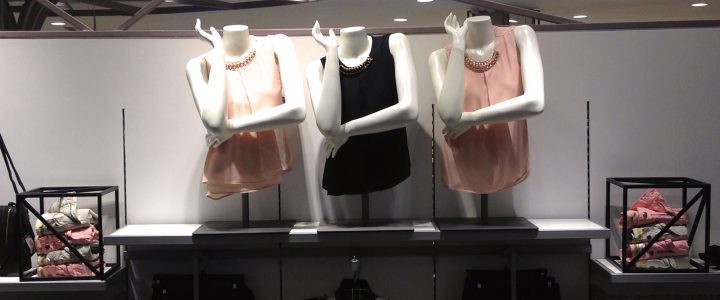
The visual merchandiser is the person responsible for the display of a store or a chain of stores to boost sales.
The practice of visual merchandising (VM) dates back to the earliest retailers who grouped, separated, and arranged their products to suit the customer; this, in its core sense, is a characteristic of the discipline. Over time, the stage setting or representation in certain businesses transformed it into a pure aesthetic, taking the product to unexpected places that invited or gave customers an idea of using it.
This allowed artists, designers, and interior designers to find a space for professional development in the practice. Thus, inspiration and aesthetic sense reign in the industry, seeing professionals designated for this profession as individuals with a keen aesthetic and artistic sense.
With this background, we dare say that visual merchandisers are often seen as people full of the inspiration and aesthetics necessary for setting up a store or window display, leaving aside other skills necessary for today's business.
Here we will try to describe at least four aspects that a visual merchandiser should have or try to develop to understand the work from the conception and planning of collections.
NUMBERS // A good visual merchandiser requires the ability to analyze and plan their day based on a sales report. This is essential in their day-to-day work, as is knowledge of sales metrics, KPIs, statistics, purchase projections, etc. A visual merchandiser with this knowledge is an element that enriches the process of stocking a store and achieving sales goals.
IMPROVISATION // Be reactive in favor of the concept. You shouldn't just sit idly by and wait for purchasing or distribution to fix the problem. The customer shouldn't realize that something hasn't arrived or is still in the process of arriving at the store. Transnational companies and leading retailers consider improvisation a highly sought-after and valued attribute in their vimmers.
FRUSTRATION MANAGEMENT // Since these are people with a high artistic sensitivity, it can sometimes be frustrating when the strategy changes course. This can lead to complaints and a lack of confidence when modifying what has been done. That's why it's important to be willing to listen and experiment to find the best exhibition or promotion strategy.
DEFINITION OF METRICS // While the store is primarily a place to sell, it's also a place to develop strategies and conduct tests to determine successful guidelines and verify their effectiveness. Therefore, vimmers should keep in mind that they will need to run tests with setups to see which ones best respond to sales and define brand metrics to advance the maturity of the discipline. Remember, if it can't be measured, it doesn't work.
Finally, if you're a visual merchandiser or manage a team with these characteristics, encourage them. A visual merchandiser with a numerical mindset and a sense of improvisation is more beneficial for achieving the organization's goals, and this is a plus for their expertise as visual specialists.

